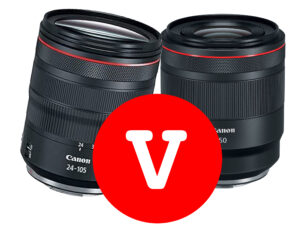There is an old Chinese proverb, Know the Past, Know the Future, and it couldn’t be more relevant when thinking about market research.
If you haven’t read my first article on marketing, to sum up what I said was that as the marketer, business owner, comms expert, blogger, digital wizz or whatever you are calling yourself: You know nothing about your audience, your customers or readers.
No matter how passionate you are about your products, your writing, posts, or business you are not able to objectively look at them from a customers’ perspective in order to make an informed decision about what you should do next with your marketing. That is, how your promotions should look, where you place them, and how you should price your product. Don’t be fooled, running a quick web ad and getting a load of traffic to your landing page is meaningless if it brings the wrong audience to it who are not interested in your product.
But that is ok – embrace that you know nothing at this stage. We are about to gain some knowledge.
How do you do Market Research for Marketing?
A Focus Group
10-20 people talking to a moderator asking them open ended questions.
If you have an established product, or are brining a new player into a mature field, a focus group helps you learn what real users of the product think. To create an effective focus group, you may setup an online ad designed to reach people you think are interested in your products…or stand outside shops you think they might frequent and hand out invites. Let’s use the example of a new range of bicycle tyre anti puncture fluid. That’s a gel like substance you can add to your bike wheels when pumping them up to prevent punctures from small thorns on an off road cycle track.
You might setup a focus group to find what your point of difference could be for this new product by putting up a Facebook ad targeted at cyclists, inviting them to partake in a focus group and tell you about how they use these products (or indeed if they do), and what they don’t like about the current offerings. You may learn that everyone has an issue with the nozzle, so you know your new product could stand out if it offered a new nozzle.
Further down the process, you could have developed this new nozzle, and brought in a new focus group and got them to spend a few months trailing both types of nozzle, and the you’ll have a good idea on what to take to market.
In a focus group, which focusses on people already interested in your type of product, ask open ended questions and listen to the answers.
I’d use a focus group to learn about complimentary products that I could take to market in an industry, not so much about bringing in more business. As Prof. Byron Sharp of the Ehrenber-Bass Institute for Marketing Science said in a lecture I attended, “Who goes to focus groups for McDonalds?…People who are already customers of McDonalds.”
Qualitative vs Quantitive Marketing Research
Focus groups are great because they are Qualitative. That is, as long as you are asking open ended questions, you will learn what is important to your customers. The downside is that you tend to have smaller samples of people. Hence the benefit of a marketing research survey, which are more about the Quantitive, a wider range of people.
With surveys, the trick is to ask the right questions. Using the example of the bike gel, I wouldn’t want to ask a question like “Was this new product easy to use?…Tick Yes or No” but I should ask the questions
“Would you buy an anti puncture gel priced between $69-99?…Tick Yes or No.”
“How often do you cycle off road where you may get punctures?…Tick daily, every few days, weekly, one a month, never…”
“Are you using a presta valve or a car valve on your bike tyre?…Tick Yes or No.”
Then follow up by asking “Did the product fit on your valve easily?…Tick Yes or No.”
And again, “Was there any leakage with your valve?…Tick Yes or No.”
I’ll the be able get an idea if I’m pricing a product correctly, if I’ve surveyed people who might actually be interested in buying it, then what type of valve they use on their tyres and if the product worked on on that value, or might need some adjustment by my product designer/engineer.
If you want your market research survey to work out, you must ask the right questions to start with.
Other research sources
The world is truly your oyster when it comes to market research. Just think a little outside the square. If you are on a budget, to get more of an idea what people think of your products or advertising (or even your competitors) browse some of the relevant forums, Google for reviews especially the small ones on product review sites that consumers jump onto when they love or hate something.
Reverse Market Research
As a marketer in the real world, I know that we do a lot of things. We sometimes try experiments with different ad placements, or attend a trade show booked at the last minute, or make a change to the product like “Now with 25% more peanuts” in a chocolate bar. How do we correlate, as in draw a line from these actions to results in sales? I keep an excel file tracking everything, web traffic, sales values and volumes, social media subscriptions, likes and shares with little flags on my charts date stamping everything I’ve ever done. Shows me what I’ve been doing, and helps me draw a line from my marketing activities, to sales results. I enhance this by also flagging external factors that are relevant, for you that might be government grants, the weather, a protest against a substance found in a competitor’s product (look up the DuPont PFOA Teflon case) the latest movies, whatever is relevant to your industry.
What do I want you to take away from this article?
That there are authoritative ways to get the knowledge you need to make informed marketing decisions about the development of your products, pricing, promotion and reaching the right people. Relying on gut, or what you think works is setting yourself up for failure.








































































